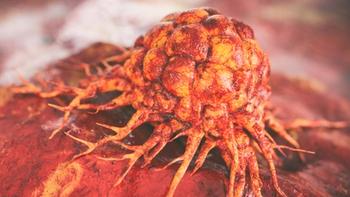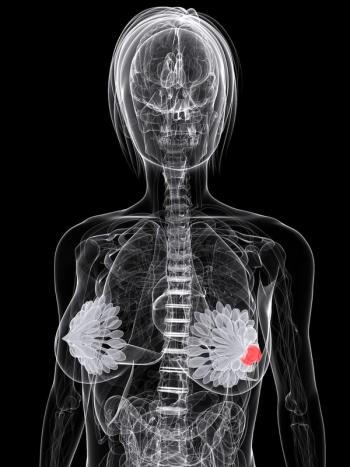
Oncology NEWS International
- Oncology NEWS International Vol 11 No 11
- Volume 11
- Issue 11
Subcutaneous Alemtuzumab Produces High Complete Response Rate in Untreated CLL
ORLANDO-Alemtuzumab (Campath-1H) administered subcutaneously produced an overall response rate of 87% among 38 patients with previously untreated chronic lymphocytic lymphoma (CLL) in a phase II study conducted at the Karolinska Institute in Stockholm.
ORLANDOAlemtuzumab (Campath-1H) administered subcutaneously produced an overall response rate of 87% among 38 patients with previously untreated chronic lymphocytic lymphoma (CLL) in a phase II study conducted at the Karolinska Institute in Stockholm.
The complete response rate was 95% in the blood and 45% in the bone marrow. An additional 34% had a partial response in the bone marrow, for an overall response of 79%. "Prolonged treatmentup to 18 weeksappears to be important to achieve high-quality bone marrow remissions," Jeanette Lundin, MD, of the Karolinska Institute, noted in her presentation at the 43rd Annual Meeting of the American Society of Hematology (abstract 3215). The response rate for lymphadenopathy was 87%.
Up to 18 weeks of alemtuzumab was administered at escalated doses of 3 to 10 to 30 mg, three times a week. "The majority of the patients had advanced disease," Dr. Lundin said. The 38 evaluable patients (out of 41 enrolled) received at least 2 weeks of therapy. The median time to treatment failure had not yet been reached at the time of the presentation (18+ months).
Adverse Events Mostly Mild
Adverse events were mostly mild and resolved with treatment. Prophylaxis with acyclovir, trimethoprim sulfamethoxa-zole, and fluconazole (Diflucan) was given. Most patients had transient grade 1-2 fever but few other first-dose reactions. Local injection site reactions (grade 1-2) occurred during the first 1 to 2 weeks of therapy in most patients.
Transient grade 4 neutropenia was recorded in 24% of patients. Four patients had cytomegalovirus (CMV) reactivation causing fever with pneumonitis. They promptly responded to intravenous therapy with ganciclovir (Cytovene). In two of these patients, alemtuzumab was restarted without recurrence of CMV. One patient who was allergic to trimethoprim-sulfamethoxazole had a Pneumocystis carinii pneumonia infection.
Subcutaneous administration was well tolerated and could be used not only for alemtuzumab but also for other monoclonal antibodies, the researchers said, with benefits such as reduced costs and home self-administration. Campath-1H is currently available only for administration as a 2-hour IV infusion. The study was also reported in the August issue of Blood [100(3):768-773, 2002].
Articles in this issue
about 23 years ago
Zoledronic Acid Reduces SREs in Solid Tumorsabout 23 years ago
Study Supports Wider Use of SLN Biopsy in Breast Cancerabout 23 years ago
Minorities Less Likely Than Whites to Receive Good Pain Careabout 23 years ago
Polyglutamate-Paclitaxel Controls Recurrent Ovarian Cancerabout 23 years ago
9cRA Shown to Reverse Premaliagnant Changes in Ex-Smokersabout 23 years ago
FDA Names New ODAC Chairabout 23 years ago
Neoadjuvant Weekly Paclitaxel Effective in Advanced Breast Cancerabout 23 years ago
Docetaxel Plus Gemcitabine Promising in Advanced Pancreatic Cancerabout 23 years ago
Polysaccharides Unique Targets for Immunotherapyabout 23 years ago
Genetic Fingerprinting Shows Distinct Sarcoma SubsetsNewsletter
Stay up to date on recent advances in the multidisciplinary approach to cancer.
















































































